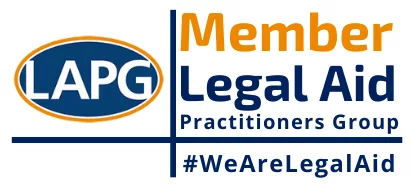Introduction
Debates surrounding transparency in the family courts have been a hot topic for many years now. In 2013 Sir James Munby, the then President of the Family Division, announced his intention to open up the courts. Work was already underway in respect of improving transparency, but he brought a renewed determination to these efforts and made it a central plank of his tenure. These efforts continued with his successor, Sir Andrew McFarlane, and culminated in the introduction of a ‘Reporting Pilot’ scheme to allow accredited journalists and legal bloggers to report on what they see and hear in children cases in the family courts. These pilot schemes have been steadily expanded from their origins in 2023 and, on 27th January 2025, the scheme was extended to all family courts in England and Wales.
Just three days before the new open reporting provisions were rolled-out nationwide, the Court of Appeal delivered a judgment addressing whether the judges who presided over proceedings in respect of Sara Sharif should be named, or remain anonymous. Sara Sharif was a young girl who was brutally murdered by her father and step-mother in August 2023. There had been a significant level of involvement from the family court in Sara’s young life, and questions arose as to what information from those proceedings should be released to the media and public. This tragic case gave rise to an important question as to whether or not the family court judges involved should be named. The Court of Appeal considered this question and decided they should be.
It may be a coincidence that these two important developments in respect of transparency in the family court occurred so close in time to one another, but they can both be seen in the context of a determination to continue the push for open justice and accountability in the family courts. In the following article, we will outline the recent changes to transparency rules in the family courts, outline what these changes might mean for people using the courts, and consider the wider issues regarding transparency (such as those raised by the Sara Sharif case).
What is changing with open reporting?
As of 2025, the reporting pilot in family courts became permanent and extended to all family courts in England and Wales. This means that journalists and legal bloggers can request, and judges will be able to make, a ‘Transparency Order’ in family law cases involving children. Journalists have been able to attend family court hearings involving children since 2011. However, until the introduction of the recent reforms, the default position was that the media were prevented from publishing information about the proceedings. The reporter could seek the Judge’s permission to report aspects of the case, but there was no guarantee such an order would be granted. This greatly hampered reporting on family court proceedings.
Under the new regime, the starting point is that a reporter will be able to report on proceedings, unless there is a good reason not to allow this. A Transparency Order sets out what can and can’t be reported in respect of the proceedings. It provides for names and any details which could identify the parties or children involved in the case to remain confidential. It allows for reporters to see certain documents to allow them to better understand the case and allows reporters to discuss the case with the parties and their legal representatives. The Judge may amend the order to suit the particular circumstances of the case or, if there is a compelling reason, not permit any reporting at all of the case. Nonetheless, the standard Transparency Order makes clear that the default is firmly in favour of journalists being able to report on proceedings.
The rollout of this new regime is being staggered. It started with all public law children cases (care proceedings) on 27th January 2025, and will include private law children cases (disputes over children between separating parents) as of 1st May 2025. From 29th September 2025, both public and private cases before magistrates will also be included.
As noted above, there is a presumption in favour of the making of a Transparency Order, and there needs to be good justification not to make one. Successful arguments against Transparency Orders are likely to centre around the welfare of the child, rights to a fair trial (under Article 6 of the European Convention on Human Rights), and rights to private and family life (under Article 8). However, it is likely to be a rare case where no reporting at all is possible, even if details relating to parties and children are kept strictly confidential.

What impact will these changes have?
Family courts have huge power to intervene in people’s lives. They can order that a child be adopted or removed into care. They can restrict a parent’s contact with their child, or order a parent to ensure a child has contact with an ex-partner who was domestically abusive. The case of Sara Sharif demonstrates the extent of these powers, and the devastating impact decisions can have when they go wrong. The family court was involved at several points during Sara’s short life, and ordered that she live with her father and stepmother, ultimately resulting in her murder. The subsequent decision to anonymise the names of the judges who made these decisions only served to create a feeling from some quarters that the family court was reverting to its previous default of secrecy and a lack of transparency. The emphatic way in which the Court of Appeal reversed this decision and made clear the names of the judges needed to be released fits squarely within the overriding push for greater openness as exemplified in the open reporting reforms.
It will take some time before we fully understand the impact of these recent reforms. However, by opening the doors to family courts, it will hopefully become easier to objectively evaluate the decisions being made in them, to better hold judges and others in positions of authority to account, and to ensure that there is greater consistency in the decisions being made across cases. Whilst it is not being suggested that transparency in the family courts is an antidote to all the ills of the family justice and child protection systems, it is hoped that the cumulative effects of reporting on family law cases may help to improve decision making and improve public confidence in a much maligned system.
In a climate in which the availability of legal aid is greatly limited, meaning that many litigants will be without representation, accountability becomes even more important. Even for those of us who work in the family justice system, the procedures, rights, and wrongs can be complicated and unclear. Those who do not interact with the family courts on a regular basis barely stand a chance without significant help and guidance. It is hoped that shining a light on the decision-making process will help improve the quality and consistency of those decisions, which can only benefit those who interact with the family courts.
Importantly, these changes seek to further realign the balance between transparency and privacy, not to do away with privacy altogether. The reforms continue to place a significant emphasis on maintaining confidentiality for children involved in family proceedings, and only allow accredited journalists and legal bloggers to report on cases in the family court. It will remain an act of contempt of court to publish any details which may identify the parties, and serious consequences can follow for those who breach these rules.
What does this mean for people involved in family court cases?
If you are currently involved in family law proceedings involving children, here are some important points to remember:
- The default position remains that you and your children will remain anonymous. It is an offence for anyone to publish details which may link you, the other parties, or your children to the case without the judge’s permission, so you don’t need to worry that a Transparency Order will result in your private affairs becoming public knowledge.
- You will also not be able to publish any details which may link you, other parties, or your children to the case. Failure to respect this rule could put you in contempt of court, which is a criminal offence.
- Not just anyone will be allowed into family courts, journalists and legal bloggers must be approved.
- The presumption in favour of a Transparency Order is challengeable. If you believe that there are genuinely good reasons not to make one in your case, speak to your solicitor.
This article was written by Edward Nicklin & Elly Johnston of Goodman Ray
Contact us today
If you have any questions or wish to get legal advice on any of the topics raised above, please feel free to ring us 020 7608 1227.
Alternatively, email Edward, co-author of this article and Solicitor at Goodman Ray.






